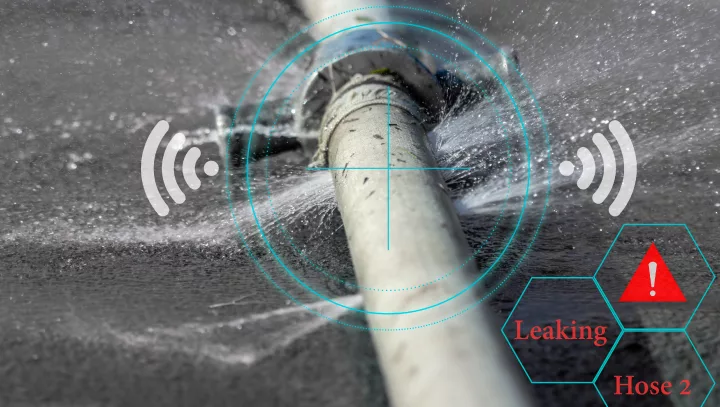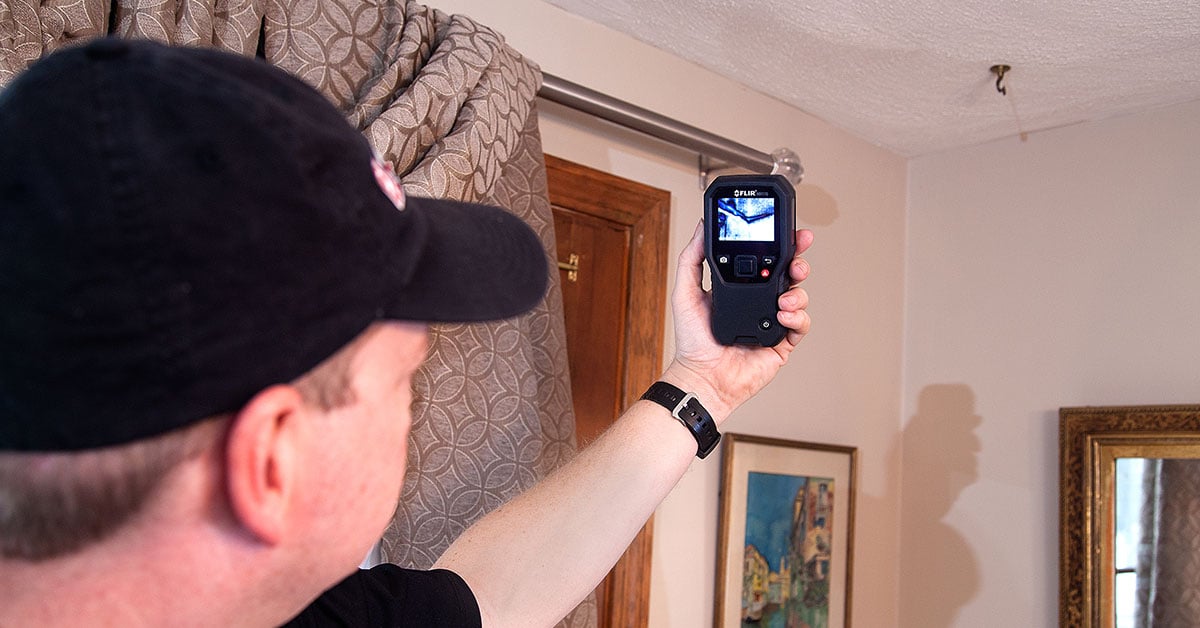Water Leak Detection: How to Recognize and Fix Leaks Before They Trigger Damages
Water Leak Detection: How to Recognize and Fix Leaks Before They Trigger Damages
Blog Article
Ingenious Solutions for Early Detection of Water Leaks in Buildings and Infrastructure
As the stability of structures and framework is extremely important, the challenge of very early detection of water leaks has actually stimulated innovative services that promise to change the means we protect against possible problems. From advanced leak detection technologies to the release of IoT sensing units for real-time surveillance, the landscape of leak avoidance is evolving rapidly. Artificial intelligence algorithms offer a glimpse into the future of leak prediction, while thermal imaging offers a non-intrusive approach for identifying covert leaks. Automated water circulation analysis systems are improving just how leaks are recognized and addressed, paving the method for an aggressive method to water leakage discovery. Each of these options holds the vital to guaranteeing the integrity and long life of our built setting, triggering a shift towards a more sustainable and effective future.
Advanced Leakage Detection Technologies
Advanced leak detection modern technologies, furnished with innovative sensing units and algorithms, play a crucial role in quickly identifying and pinpointing water leaks in different settings. Electro-magnetic sensors can determine adjustments in electro-magnetic fields created by water, offering yet one more layer of leak discovery ability.

IoT Sensors for Real-Time Monitoring
In the world of modern-day water leak discovery, the assimilation of IoT sensing units for real-time monitoring stands for an essential innovation in improving positive leakage detection capacities. These sensing units offer continuous surveillance of water systems, giving real-time data on water flow rates, stress variations, and temperature level modifications. By leveraging IoT modern technology, these sensing units can identify also the tiniest abnormalities in water use patterns, allowing very early identification of prospective leaks prior to they escalate into major issues.
IoT sensing units transfer information to a central system, where innovative algorithms evaluate the information and generate notifies or alerts when abnormalities are identified. This real-time monitoring capability permits homeowner or center supervisors to promptly attend to leakages, reducing water damage, decreasing fixing prices, and conserving water resources.
Moreover, IoT sensing units can be integrated with building management systems, permitting for automated responses to discovered leaks, such as shutting down water shutoffs or turning on pumps to reduce the impact of leakages. Overall, the implementation of IoT sensors for real-time tracking significantly enhances the effectiveness and effectiveness of water leakage detection in buildings and framework.
Artificial Intelligence Algorithms for Leakage Forecast

One secret advantage of utilizing maker learning for leakage forecast is its capacity to constantly discover and improve its accuracy over time. As even more data is accumulated and fed into the formula, it can fine-tune its predictions and adjust to transforming conditions, inevitably enhancing the reliability of leak detection systems.
Furthermore, artificial intelligence algorithms can help in recognizing refined indicators of leakages that may go undetected by conventional tracking get redirected here methods. water leak detection. By analyzing complex information collections in real-time, these algorithms can provide early cautions and informs, permitting for prompt treatment and preventative upkeep to minimize potential water damages and linked costs
Using Thermal Imaging for Leakage Detection
Thermal imaging modern technology provides a promising method for detecting water leaks in different systems and infrastructures. By making use of infrared radiation and temperature differences, thermal imaging cams can determine surprise leaks that are not easily visible to the nude eye. When water escapes from pipelines or frameworks, it often changes the temperature of the surrounding location, developing temperature differentials that thermal cams can record. These temperature abnormalities are after that converted into noticeable pictures, highlighting the exact location of the leakage.
One of the crucial advantages of thermal imaging for leakage detection is its non-intrusive nature. Unlike typical methods that may need damaging right into walls or floors to locate leakages, thermal imaging enables non-destructive screening. This not only saves time and reduces costs however also minimizes disruption to the building or infrastructure being assessed. important link Furthermore, thermal imaging can swiftly check big locations, giving an extensive introduction of possible leak resources in a prompt manner. Generally, using thermal imaging technology boosts the effectiveness and precision of water leak discovery, making it an important device for preserving the integrity of buildings and frameworks.
Automated Water Flow Evaluation Solutions
Exactly how can automatic water circulation evaluation systems reinvent the detection and monitoring of leaks in different systems and infrastructures? Automated water circulation analysis systems offer a proactive technique to leakage detection by constantly checking water flow prices and patterns. By developing standard data, these systems can swiftly identify variances that might show a leak, allowing timely intervention to protect against considerable damage.
These systems utilize innovative formulas to examine real-time information and supply immediate signals when abnormalities are found, allowing for speedy activity to be taken. In addition, automatic water flow evaluation systems can be incorporated with building administration systems or IoT systems, boosting general efficiency and enabling remote monitoring capacities.
Additionally, the data accumulated by these systems can be used for anticipating maintenance purposes, assisting to recognize prospective weak factors in the infrastructure before leakages occur. On the whole, the execution of automated water circulation evaluation systems can significantly improve leakage detection and administration practices, inevitably resulting in cost savings, reduced water wastage, and raised sustainability in structures and facilities.

Conclusion
Finally, the integration of sophisticated leakage detection technologies, IoT sensing units, maker learning formulas, thermal imaging, and computerized water circulation evaluation systems supplies cutting-edge solutions for early discovery of water leakages in buildings and infrastructure. These innovations make it possible for real-time monitoring, prediction of leakages, and reliable detection approaches to stop water damages and wastage. Applying these solutions can help in maintaining the integrity and sustainability of water systems in various setups.
Report this page